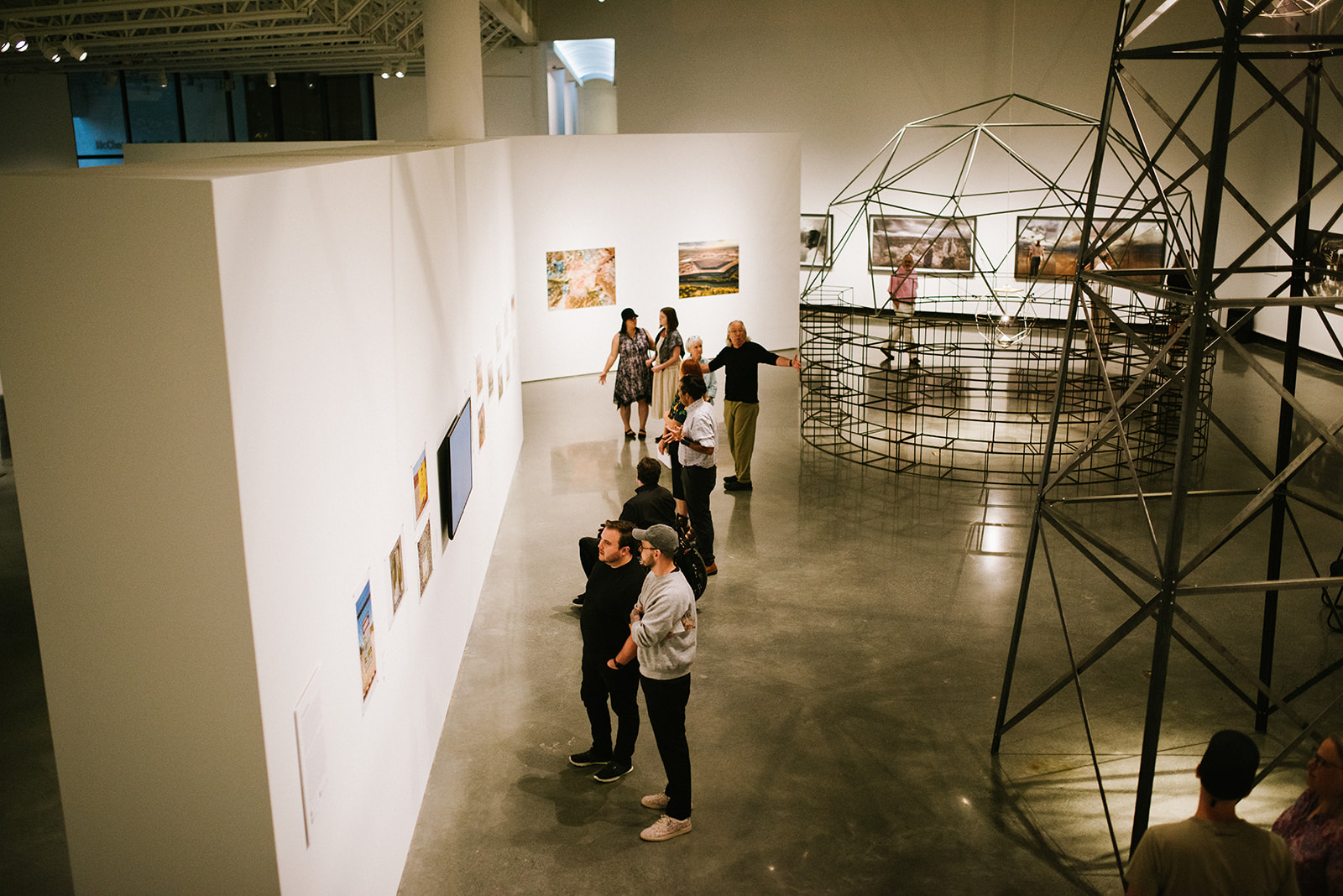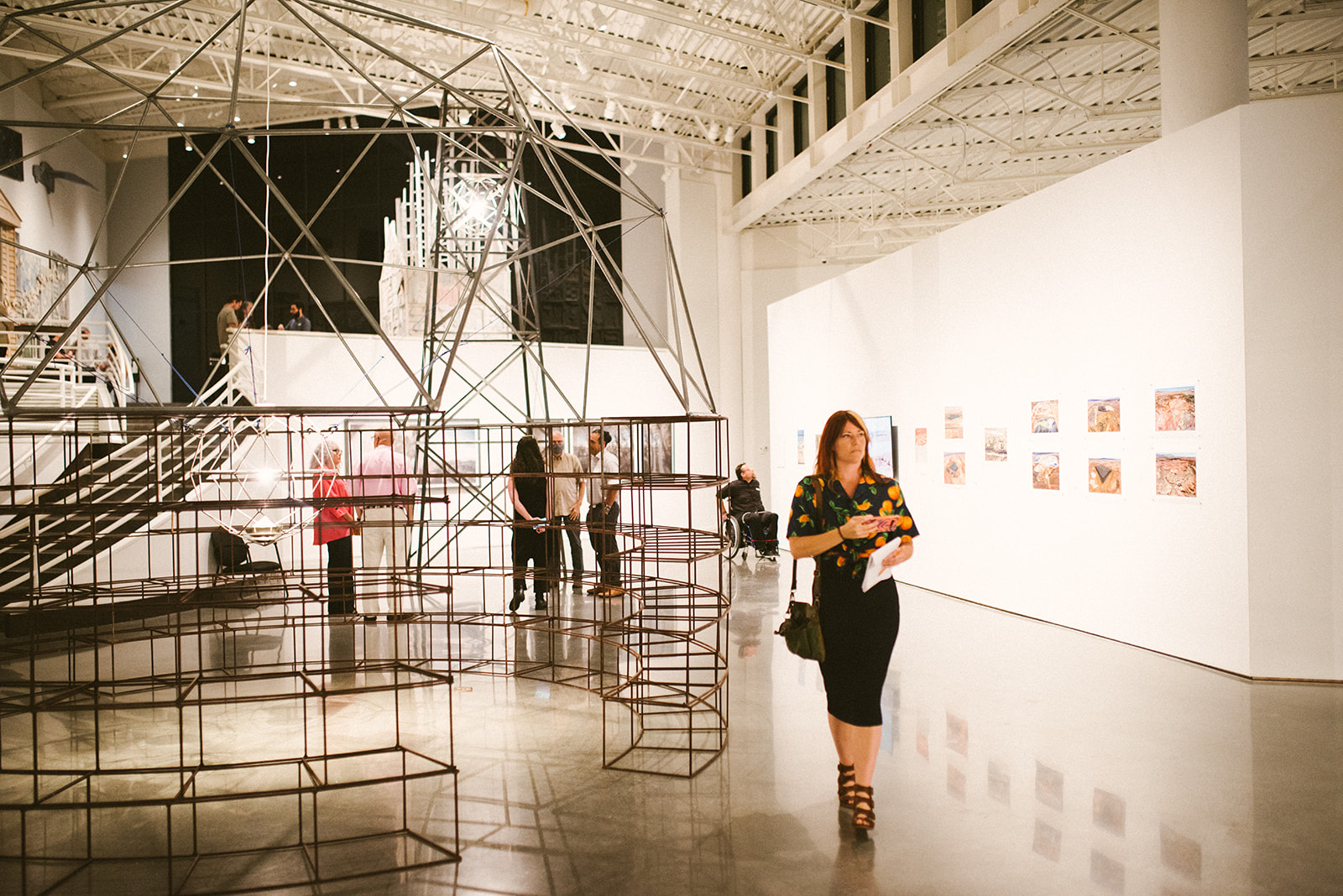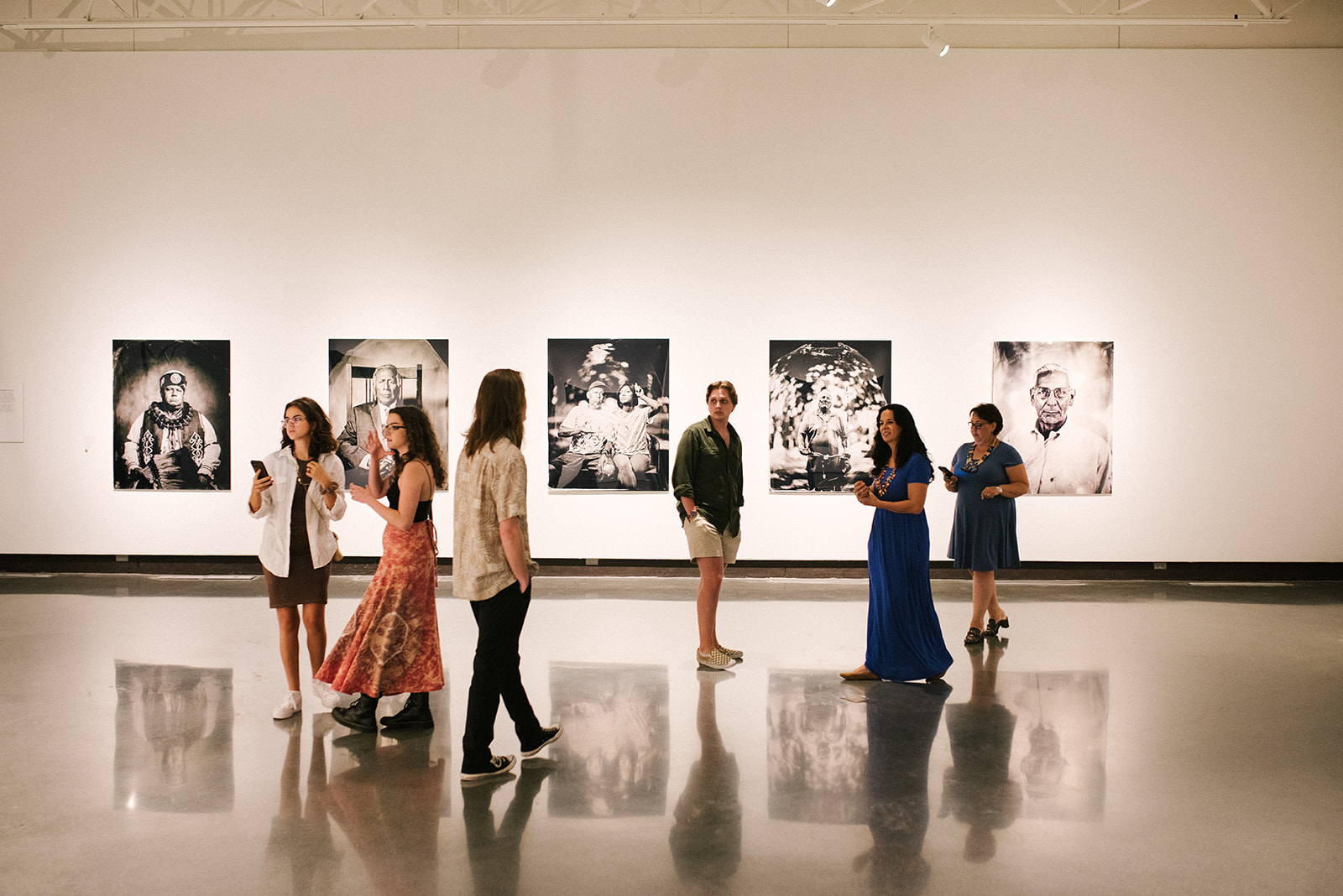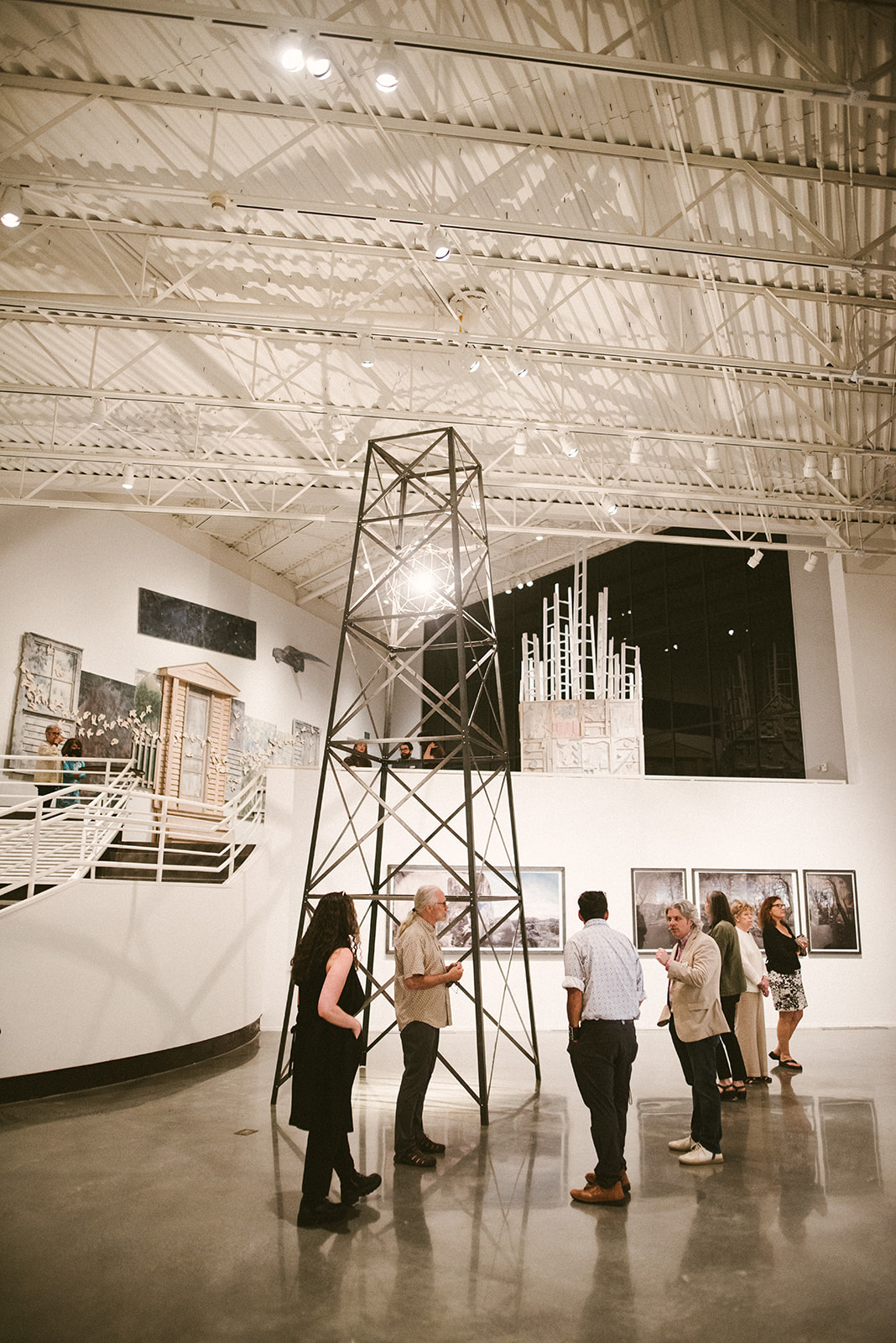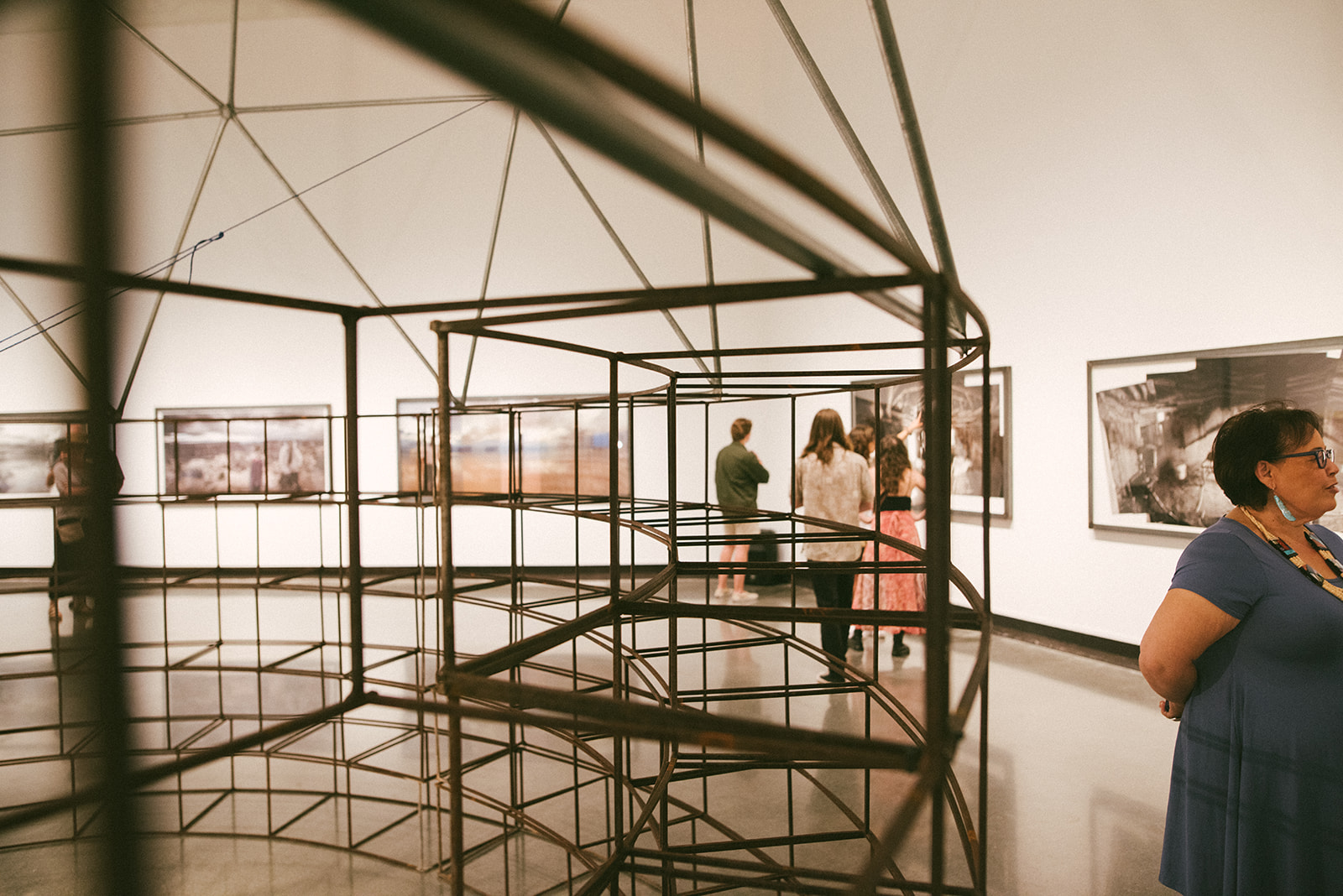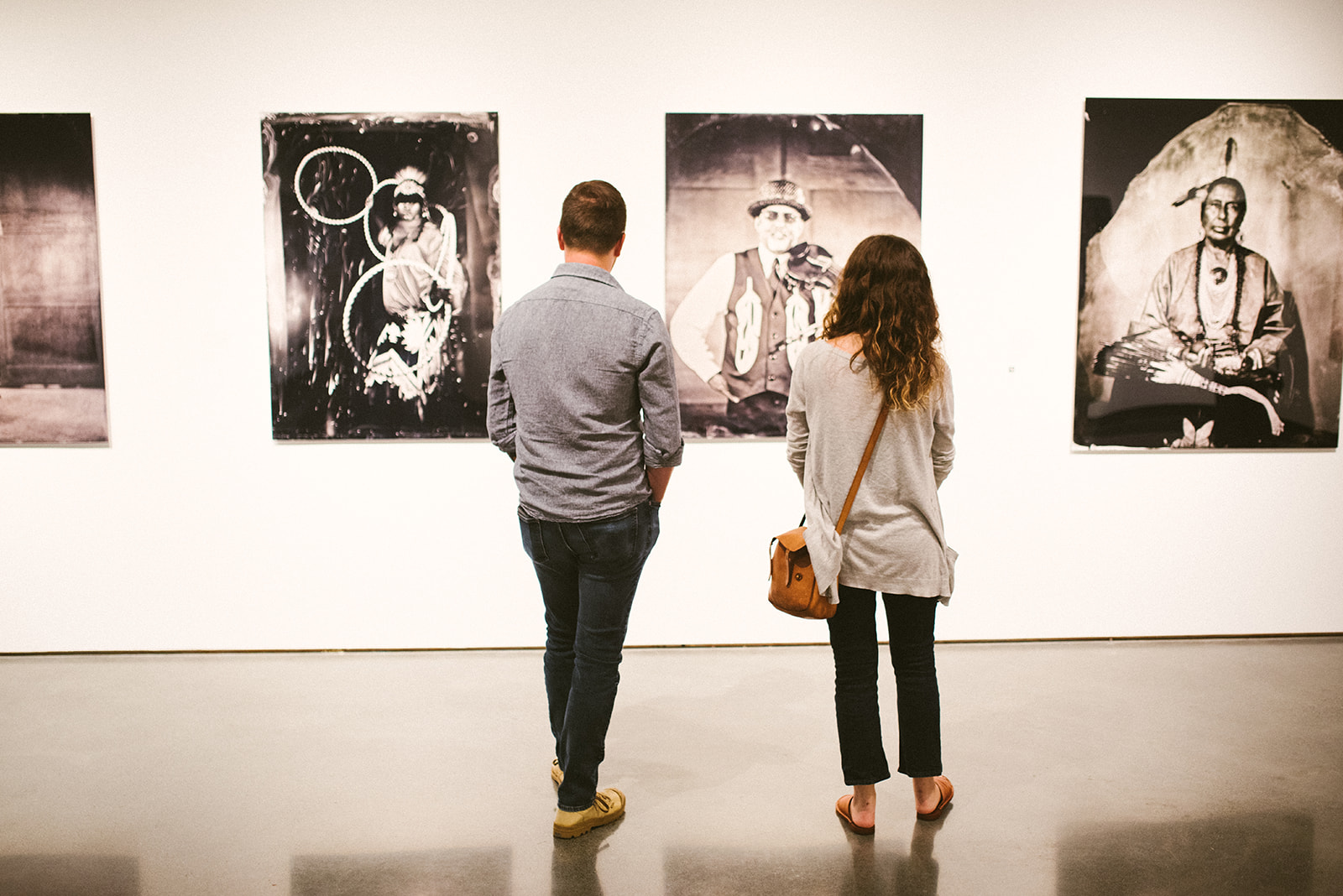Navajo photographer works at the intersection of environmental and racial justice.
On View June 16 – December 31, 2022 | Main Gallery
Will Wilson: Connecting the Dots is a mid-career retrospective of the Diné (Navajo) photographer and community engagement artist Will Wilson. A prolific artist with a wide range of technical experience, Wilson presents an artistic vision that is experimental both in technique and approach. His works utilize cutting edge technologies alongside historical photographic processes, ranging from augmented reality and drone photography to tintypes. This exhibition showcases photography and sculpture from three significant bodies of work created over the last two decades, addressing topics such as environmental justice, institutional racism, and Indigenous futurism.
An opening reception with the artist will be held on Thursday, June 16 from 5–8pm. The reception is free and open to the public, with a suggested $10 donation.
"As artists and agents of Indigenous imagination, we are more than our shared histories of colonization," said artist Will Wilson. "There are other aspects of our experience that we must express and convey and these expressions must be received with respect. This necessity requires that we tell our stories well, with the vision of a people who understand the generative power of representation. It is in this particular process of self-expression that we practice Native representational sovereignty."
This exhibition was supported, in part, by The Ellsworth Kelly Foundation and the Foundation for Contemporary Arts.
AUTO-IMMUNE RESPONSE (AIR)
This project started in 2005 and continues today. In it, a figure known only as The Protagonist navigates a post-apocalyptic landscape populated by Native People. Wilson himself portrays the central figure, a role at once empowering, sacred, and therapeutic. Fusing multiple genres of photography, he confronts historical and intellectual trauma, considering how he has come to embody such trauma.
THE CRITICAL INDIGENOUS PHOTOGRAPHIC EXCHANGE (CIPX)
CIPX is an ongoing community-centered practice that convenes Indigenous artists, art professionals, government leaders, and the general public in the performative ritual of studio portraits. Wilson employs large format (8x10) wet plate collodion studio photography, the same process that has so deeply influenced our collective understanding of Native American people and our national identity. Augmented reality technology and smart devices map videos to the portraits, connecting the images to the subjects' voices and perspectives.
Download the "Talking Tintypes" app and use your phone's camera to explore augmented reality stories, now on view in SECCA's Main Gallery!
CONNECTING THE DOTS
Most Americans know the story of the Navajo Code Talkers, who used the unwritten language as code to help win World War II. Lesser known, but arguably more consequential, is that the fissile material used in the development and stockpiling of atomic bombs was sourced from Indigenous nations, in particular Navajo Nation. Connecting the Dots is based on a photographic survey of the over 500 Abandoned Uranium Mines (AUMs) located on the Navajo Nation. The AUMs are physical manifestations of a complex and traumatic history, and this project raises awareness the Navajo Nation's efforts to receive remediation for the uranium extraction that has poisoned the land and impoverished a people. Wilson is creating an unconventional photographic survey using drone-based, aerial, and app-activated photography to empower Diné people to re-story their narrative. The project uncovers environmental and social degradation, but more importantly, it creates a platform for voices of resilience and a vision for restorative systems of economy and memory-making.
ABOUT THE ARTIST
Will Wilson's art projects center around the continuation and transformation of customary Indigenous cultural practice. He is a Diné photographer and trans-customary artist who spent his formative years living on the Navajo Nation. Wilson studied photography, sculpture, and art history at the University of New Mexico (MFA, Photography, 2002) and Oberlin College (BA, Studio Art and Art History, 1993). In 2007, Wilson won the Native American Fine Art Fellowship from the Eiteljorg Museum, in 2010 the Joan Mitchell Foundation Award for Sculpture, in 2016 the Pollock-Krasner Foundation Grant for Photography and in 2020 Wilson was the Doran Artist in Residence at the Yale University Art Gallery. Wilson has held visiting professorships at the Institute of American Indian Arts (1999-2000), Oberlin College (2000-01), and the University of Arizona (2006-08). In 2017, Wilson received the NM Governor's Award for Excellence in the Arts. His work is exhibited and collected internationally. Wilson is Program Head of Photography at Santa Fe Community College.
ARTIST STATEMENT
Throughout my work I have focused on photographing Navajo People and our relationship to the land. While portraying this relationship I have always been aware of how our representation has never been without consequence. Historically, photography as a scientific means of categorization cannot be made separate from the social, political, economic and ecological colonization of Native North American. Photography has been used to classify and reinforce theories of racial superiority and strengthened anthropological discourse positioning American Indians as primitive others. More commonly, it has been used to reinforce negative stereotypes of Indians, pervasive throughout American culture.
My work is a response to the ways in which photography has been used as a mechanism of colonization. Decolonizing photography for the use of American Indians has to occur through the articulation of a Native representational subjectivity. In the place of colonizing representation, I want to produce images and sensory experience, which convey representation of, by and for American Indians. This means developing a methodological practice, a framework from which to draw upon. It is towards these ends that I see my work progressing.
In my work there are stories that I grew up with, stories bringing together the cultural weave from which I come. These stories are personal to me as an individual and a member/citizen of a people; therefore, they must be presented and received with respect. In a way it is a ceremony, it's about exorcising discursive demons that have been planted in our minds and the processes of remembrance and continuance that enable us to keep functioning.
For Indians, I want to produce experiences that bring us close to home, while unsettling us with the evidences of colonization. I want my work to strengthen Indians with examples of resistance, and the possibilities of controlling one's own representation. For non-Indians I want to call into question the uncritical consumption of images of American Indians both positive and negative. This is to be done my presenting experience that articulates a history of life constantly remembered, strengthened and continued in the face of colonization.
